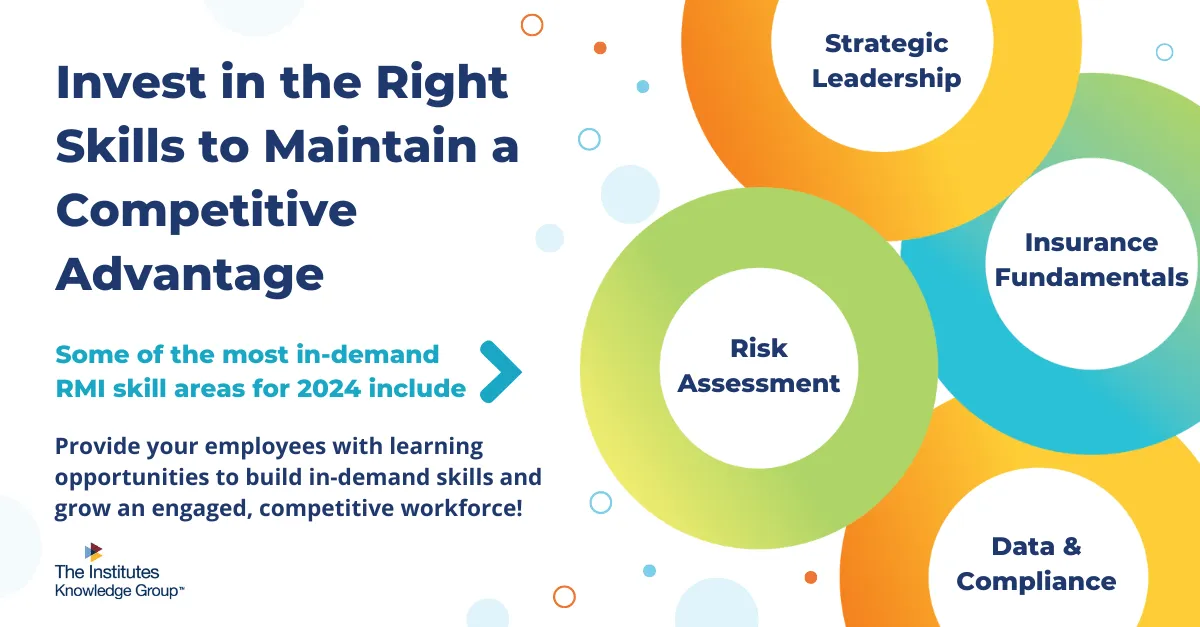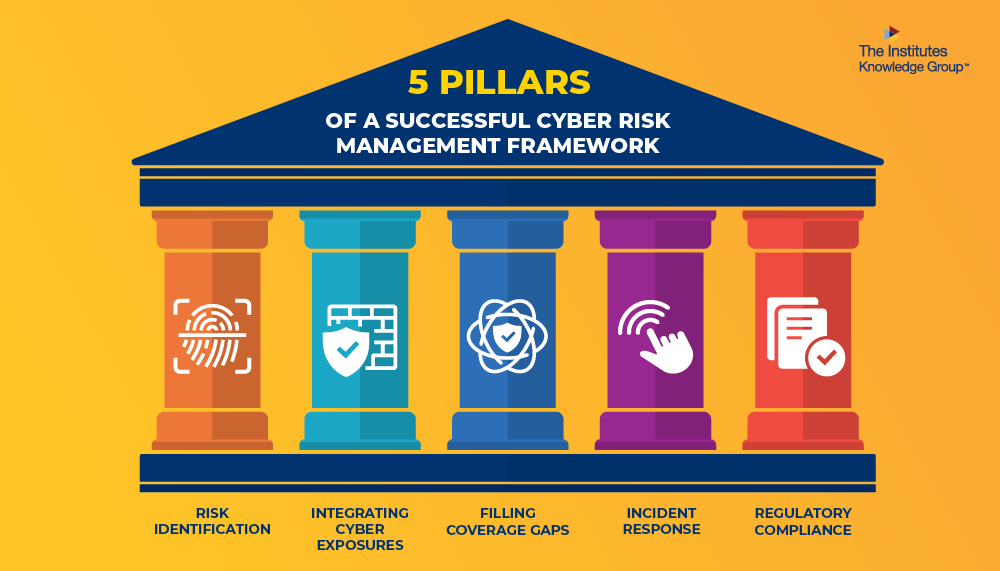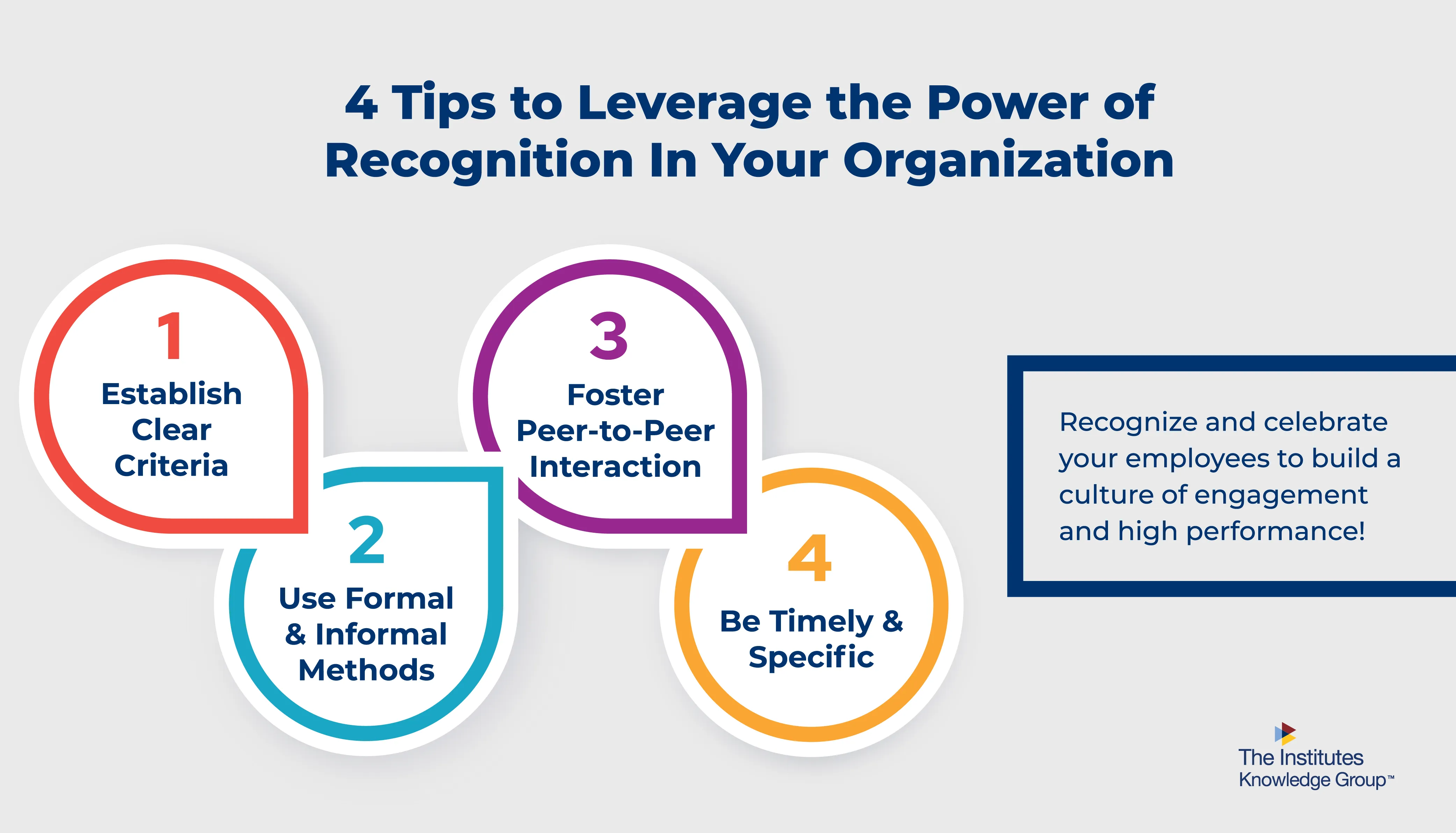The RMI field is evolving at a rapid pace, which is only accelerated by the rise of AI and machine learning. This means that professionals across all sectors should be continuously honing their skills and keeping up with the latest trends. Whether they want to stay competitive among their peers, provide better customer service, or anything in between, investing in the right risk management and insurance skills can help any professional advance in their field.
Read on to discover more about these top skill areas!
How We Identified 2024’s Top Risk Management and Insurance Skills
Each year, risk management and insurance professionals from around the world engage with leading education resources from The Institutes Knowledge Group. In the past year alone, our community of learners completed nearly 100,000 courses and earned over 11,000 designations.
We compiled that data into our 2024 Skills Report, which identifies the top designations earned, courses completed, and skills utilized in the past year. The report groups those skills into broader categories to identify trends and patterns and give insights into the state of RMI skills development. Below, we dive into a few of the top skill areas. Be sure to check out the report for the full findings.

In-Demand Skill Area: Risk Assessment
Risk assessment is all about identifying, analyzing, and evaluating risk. By determining the likelihood of potential risks, risk factors, and the overarching impact they could have, RMI professionals provide stakeholders with crucial knowledge they rely on to create a plan of action. If the risk assessment is flawed or incomplete, there can be serious consequences for both the insurer and the insured.
Risk analysis, risk management, and risk assessment are all key aspects of this skill area and need to be continuously nurtured. To protect assets and data in an increasingly digital world, skills such as cyber risk management are especially important to stay current on.
We offer a range of formats to sharpen risk assessment skills, including courses from the following Institutes Designations:
And this collection of leading topic courses is a great way to learn new skills within the flow of work, with average course times that range from 1-3 hours.
In-Demand Skill Area: Data & Compliance
Due to the wide range of personal information insurance companies need to collect and maintain—from policy records, to claims details, to credit references—they’re a prime target for cybercriminals. Plus, all that information needs to be processed and analyzed for experts to accurately assess and price risk. So employees not only need to be well-versed in compliance, but also in skills like data analysis and financial statements.
In fact, data science is quickly revolutionizing the RMI field. This is helping insurers move from a “detect and repair” model to a “predict and prevent” one, as individuals and organizations move to more innovative risk management practices. With the ability to access more data than ever from a multitude of sources, insurance companies need to be able to efficiently extract the most valuable insights and apply the proper products, services, and actions to every situation.
Looking for the best way to upskill in data and compliance? We recommend these designations and courses:
In-Demand Skill Area: General Insurance Fundamentals
For those new to risk management and insurance, the wide range of terminology, laws, and processes can be overwhelming. So it’s no surprise that these green employees are eager to close the gaps in their knowledge and learn as much as they can at the beginning of their RMI career. This may range from the role of insurance in society, to regulations, to insurance and risk management fundamentals.
Organizations can leverage this interest by providing recommended learning pathways that give employees a view of their full education journey. This not only helps increase engagement, but also sets employees up for success and guides them through deeper levels of knowledge acquisition. A few popular designations and courses to grow fundamental insurance skills include:
In-Demand Skill Area: Strategic Leadership
Strategic leadership is one of the most valuable skills in 2024, but according to the U.S. Bureau of Labor, an estimated half of the current insurance workforce will retire in the next 15 years. There’s a critical need to fill the talent pipeline and start fostering future leaders now. Otherwise, people-centric skills like critical thinking, collaboration, and strategic decision-making may be lost, along with valuable institutional knowledge.
Organizations that want to attract and retain top talent, while protecting their bottom line, should encourage their employees to develop strategic leadership skills. As the leadership standard in risk management and insurance, The Institutes Designations' CPCU® provides employees with practical leadership expertise, credibility, and holistic risk management and insurance skills. There’s no better way to support the talent who will lead the future!
Explore CPCU and everything you need to get started today.
Risk Management and Insurance Skills to Take into the Future
In this rapidly evolving landscape, the benefits of continuous learning and skill development for RMI professionals can’t be overstated. Organizations are looking for employees with knowledge in key skill areas like risk assessment, data & compliance, and strategic leadership, and those who are new to the RMI field can make a big impression by mastering insurance fundamentals early on. And those are just a few of the top skill areas—our full 2024 Skills Report has even more to explore.
Remember: Whether you or your team are looking to enhance existing expertise or gain new skills, The Institutes Knowledge Group is here to help, now and into the future! To connect and learn more, contact Sales@TheInstitutes.org.

About the Author
Diane Hanlon is Head of Sales and Market Development at The Institutes, where she leads sales strategy and client partnerships. She works with Learning and Development leaders to design workforce learning pathways and serves on the Board of the Society of Insurance Trainers and Educators.









